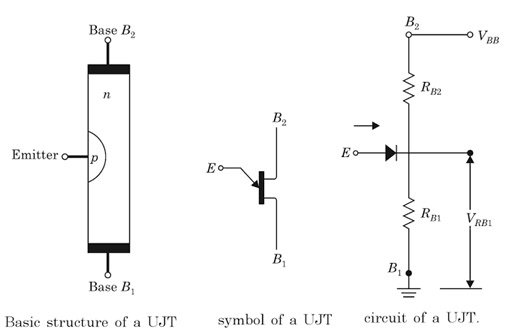When emitter terminal of a UJT is open then the resistance of the base terminal is
Right Answer is:
Any finite value
SOLUTION
The Unijunction transistor is 2-layer, the 3-terminal solid-state switching device (silicon). It is also called the double-base diode. The device has a unique characteristic that when it is triggered, its emitter current increases regeneratively (due to negative resistance characteristic) until it is restricted by an emitter power supply. Since the device has one PN junction and three leads it is commonly called UJT.

A unijunction transistor (UJT) is a three-terminal semiconductor device having one p-n junction. It is mostly used as a switch and commonly employed in timing circuits, SCR/Triac triggering circuits, oscillators, and so on. It consists of an n-type silicon semiconductor bar having ohmic contacts at each end. The two end connections are called base-1 and base-2, which are labeled as B1 and B2, respectively. This n-type semiconductor is lightly doped. Near terminal B2, a small heavily doped p-region is alloyed which forms a p-n junction with the bar. The terminal to this junction is called emitter (E).
The total resistance of the silicon bar from terminal B2 to B1 with emitter open is called the InterBase resistance RBB. Thus,
RBB = RB1 + RB2, with emitter open
where RBB is typically in the range of 4 kΩ to 10 kΩ and RB1 is usually greater than RB2 (RB2 = 60% of RBB. Hence the resistance of the base terminal is very high in UJT.
